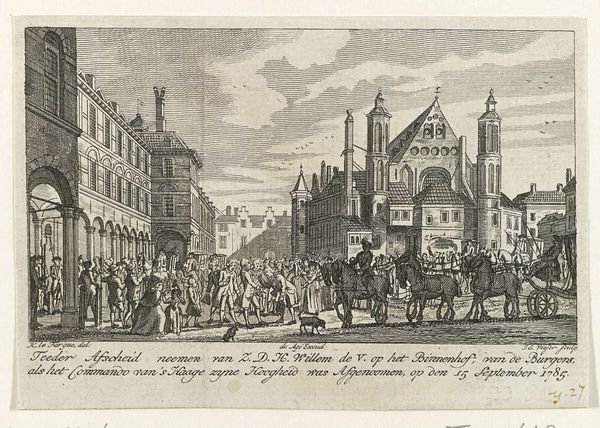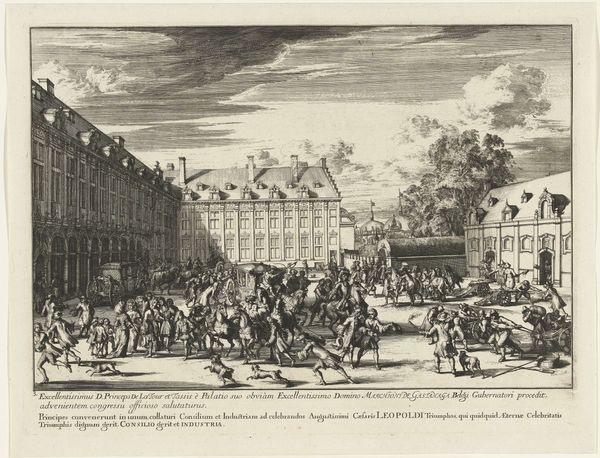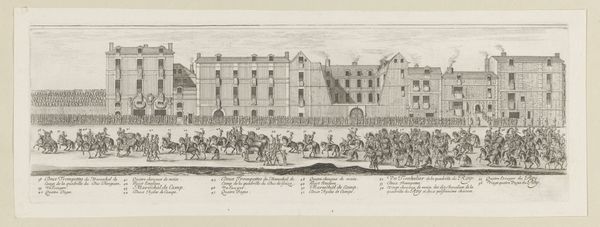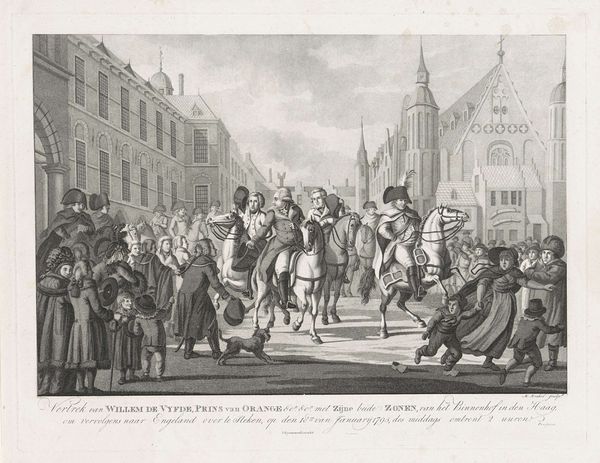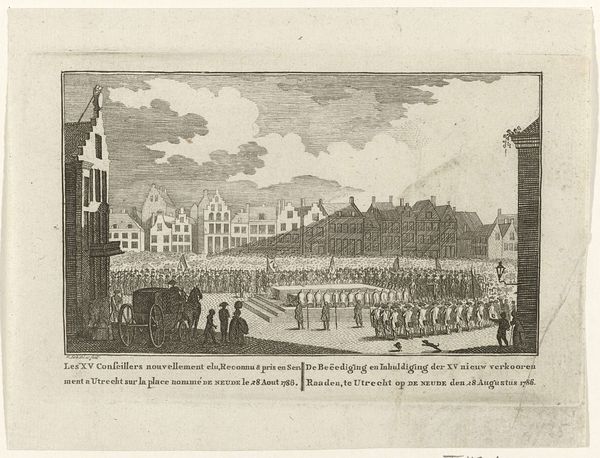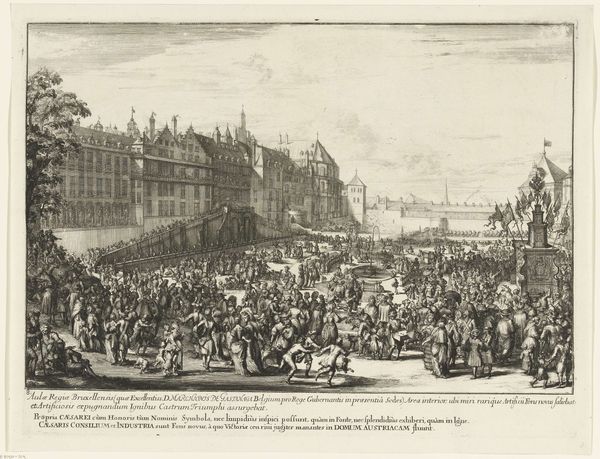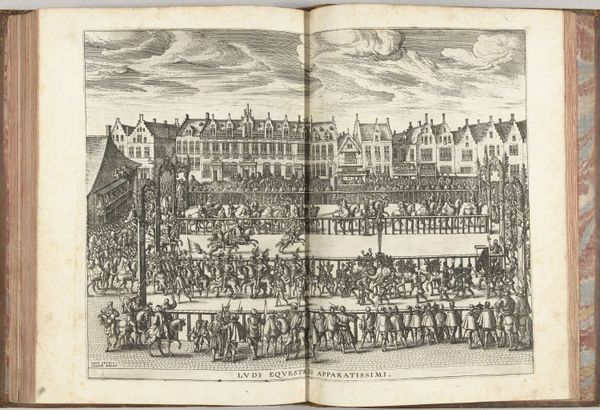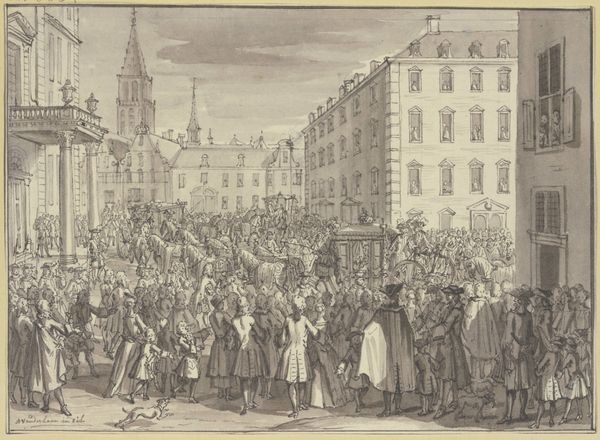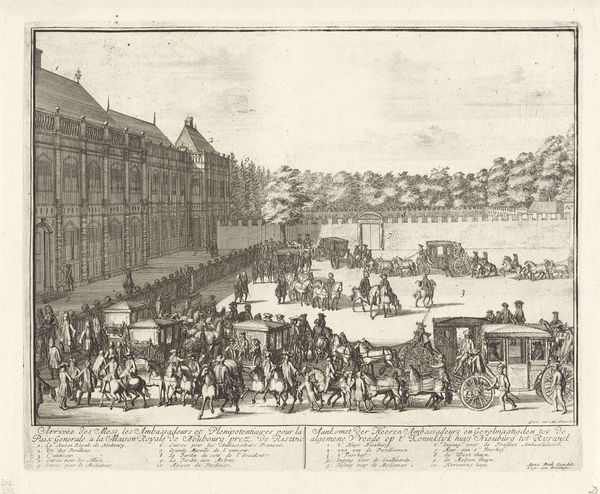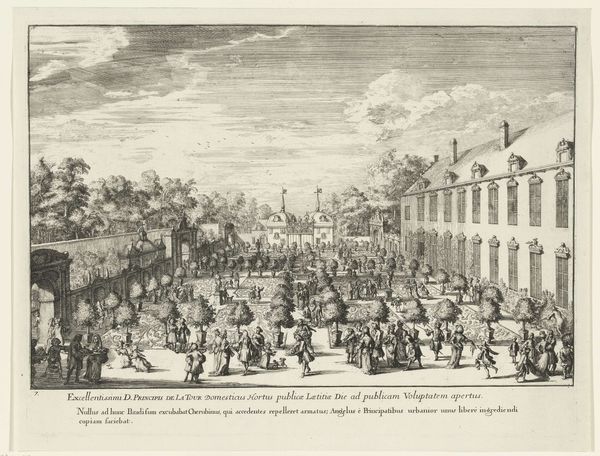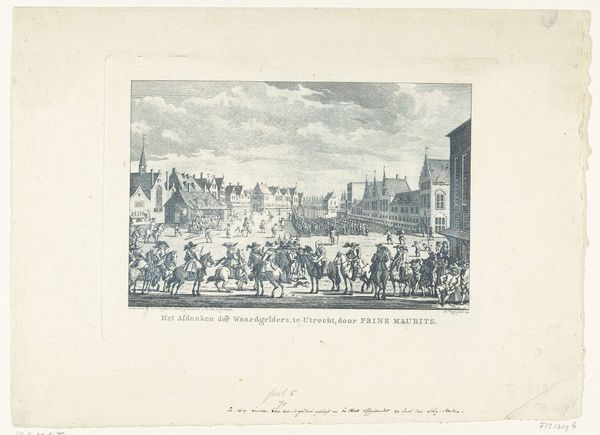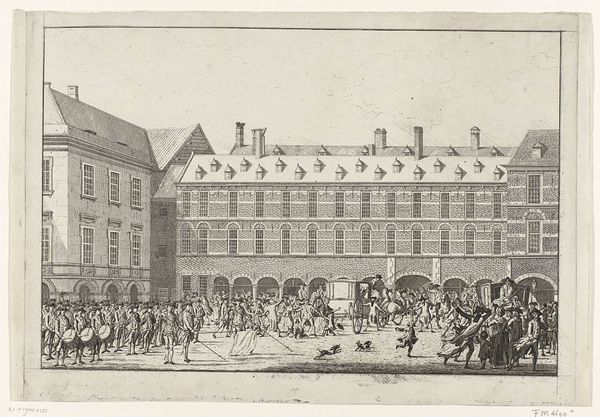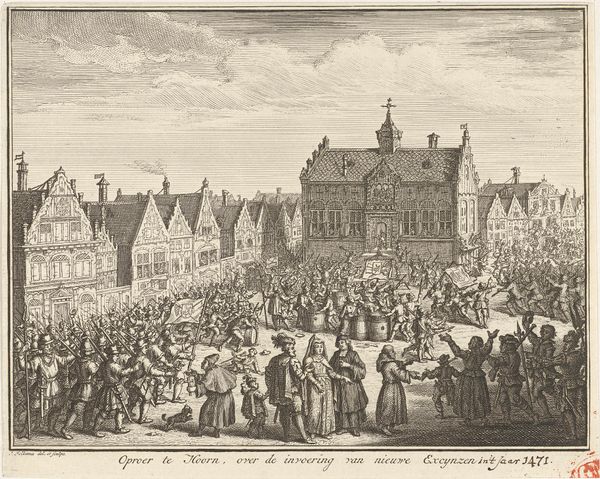
print, engraving
# print
#
old engraving style
#
cityscape
#
history-painting
#
engraving
#
realism
Dimensions: height 103 mm, width 118 mm
Copyright: Rijks Museum: Open Domain
Editor: So, this engraving, "Attack on the Carriage of the Deputies of Dordrecht, 1786," made by Willem Kok, is incredibly chaotic. The eye doesn’t quite know where to settle with so much activity going on. What’s your initial read on it? Curator: The chaos, as you describe it, is key. Think about how an image like this serves not just as documentation, but as a carefully constructed narrative. The figures aren't merely bodies in space; each is a potential carrier of symbolic meaning related to social unrest and challenge to authority. Notice how the seemingly random gestures, the postures of attack and defense, echo classical compositions of conflict, reminding us that images are always speaking to the past even when they depict the present. What feelings does the imagery evoke? Editor: There's definitely a sense of agitation. People are falling, running – it’s really quite unsettling! Is that an intentional effect, do you think? Curator: Absolutely. The choice to depict such a scene with so much dynamic energy invites viewers to participate emotionally. The event itself—an attack on deputies—speaks to a moment of profound political division. But it's not just about recording an event, is it? The engraving itself becomes a powerful tool to shape public opinion. How might such a carefully crafted image sway viewers, then and now? Editor: It almost seems like propaganda, in a way, designed to elicit a strong reaction against the attackers, positioning the deputies as victims and potentially swaying people to one side. Curator: Precisely. The symbolism here—the attackers as disrupters of order, the deputies as representatives of rightful authority—plays into deeply ingrained cultural narratives about power, justice, and the rule of law. It shows the image wasn't just capturing an event but solidifying a particular interpretation of it. Editor: That’s fascinating, considering how much history can be shaped by the way we visualize it. Thank you for clarifying what to look for when reading such images. Curator: My pleasure. Always remember: Images speak; it is our task to understand their language.
Comments
No comments
Be the first to comment and join the conversation on the ultimate creative platform.
